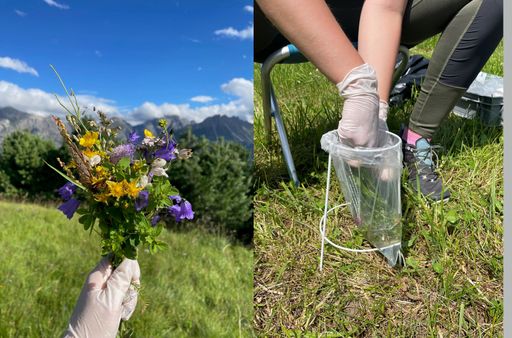Abol, Austrian Barcode of Life, is the name of the Austria -wide initiative, who have prescribed the documentation of the estimated 75,000 animal, plant and mushroom types living in Austria and are integrated into more than 20 Austrian institutions and numerous associations. Abol is coordinated by the Natural History Museum Vienna, which also acts as an interface to European and international partners. Now Abol is celebrating his 10-year commitment to biodiversity. The NHM Vienna and Abol are also co-organizers of the “Days of Biodiversity 2025.
“In view of the progressive species death, the recording of the species and the observation of changes is becoming increasingly important”is Dr. Katrin Vohland, General Director and Scientific Director of the NHM Vienna, convinced. “The Abol initiative at the NHM Vienna has developed into a central hub for biodiversity data in Austria in the past ten years. To achieve the biodiversity goals, they need more than ever joint efforts, from a wide network of biodiversity expert, with bridge formation to users in practice, as well as politics and society. The days of biodiversity serve to network these areas even more. ”
Biodiversity Days 2025
“Together on the way out of the biodiversity crisis” is the motto of this year’s “Days of Biodiversity” – the largest Austrian biodiversity conference, which takes place from the University of Natural Resources and Section 28 to February 28, 2025. The start of the conference will take place on the evening of February 25th in the NHM Vienna. For the 5th time, the Austria-wide DNA-Barcoding-initiative Abol (Austrian Barcode of Life) is actively involved in the design of the conference-on the occasion of the 10th anniversary of the initiative in the form of an exciting lecture series on the role of DNA barcoding for the Achievement of national and global biodiversity goals.
Methodically, DNA-barcoding uses certain sections of the genetic material (the so-called DNA barcodes) to identify animal and plant and mushrooms. For this purpose, these standardized gene sequences are compared with those in a reference database. “So we have a digital determination book” explains Nikolaus Sucsich, coordinator of the Austrian Abol initiative at the NHM Vienna. The more fully the reference database is, the better DNA-barcoding can be used to determine the species.
Abol contributes to the way out of the biodiversity crisis on many levels, whereby two main aspects keep returning:
Biodiversity data and networking
Important biodiversity data for Austria is generated in numerous ABOL projects. On the one hand, new DNA barcodes are fed into the publicly accessible international reference database Bold (“Barcode of Life Database), which means that more species can be determined, on the other hand, completely new uses of the reference database are being developed. “We have already achieved that about a third of the estimated 75,000 types of plants and mushrooms that occur in Austria have fed into the international database”according to Nikolaus Sucsich, Abol Manager in the Department of Central Research Laboratories at the NHM Vienna. “Abol also contributes internationally to the completion of biodiversity data that improve our understanding of biodiversity and enable the effectiveness of species protection measures.”
Abol projects also contribute directly to answers to the socially relevant questions, for example: “How does the composition of the species change through changes in land use or due to climate change?” Or very pragmatic: “Which pest affected my trees?”. Or, “How is the water quality of a river or lake ordered?” Wherever species have to be determined, DNA-barcoding makes a contribution.
At the moment, 400,000 are covered by all types worldwide by DNA barcodes in Bold. “Within only 22 years, a fifth of all species described worldwide could be incorporated”emphasizes Elisabeth Haring, head of the central research laboratories and the Abol initiative at the NHM Vienna since its beginning. “The scientific collections in natural history museums play a central role for the recording of biodiversity via DNA barcodes: With DNA-barcoding, a direct connection is established between the biological collections of the Vienna Natural History Museum and the genetic signatures.”
You can find pressing materials for download at the following link:
https://www.nhm-wien.ac.at/presse/pressemitteilungen_2025/ABOL_2025
